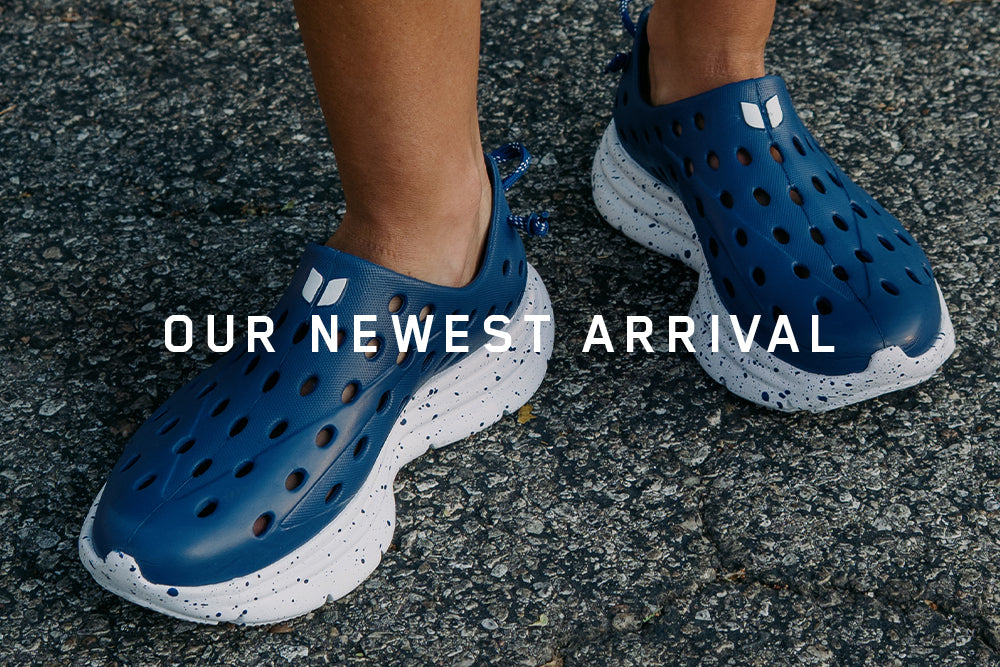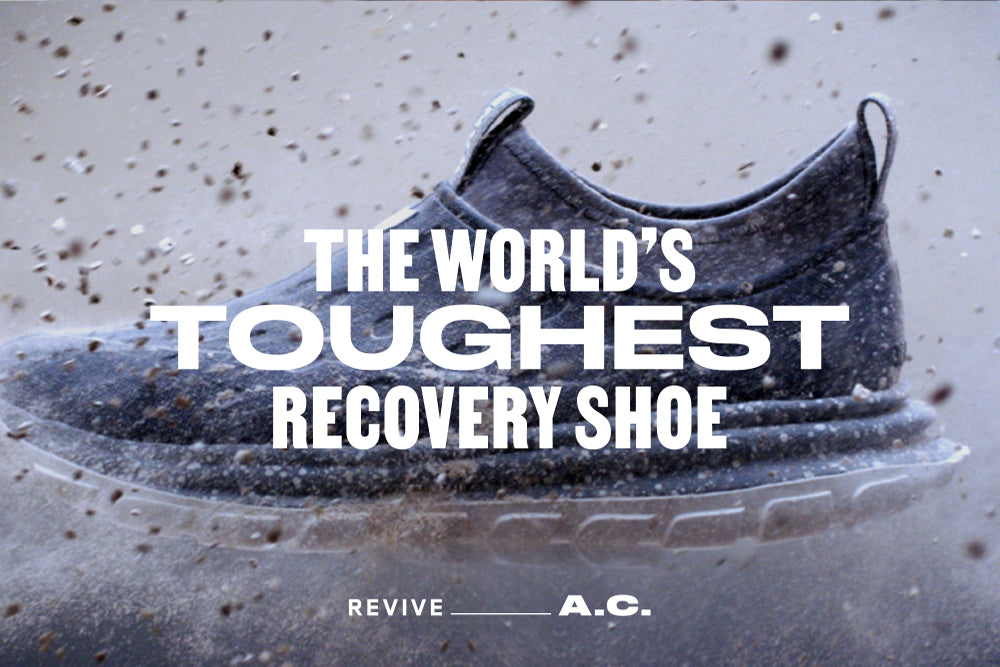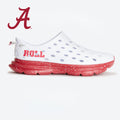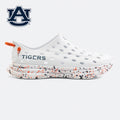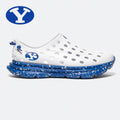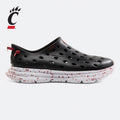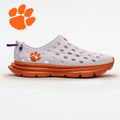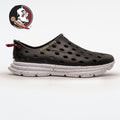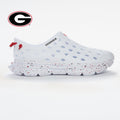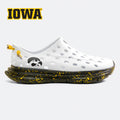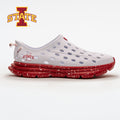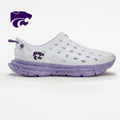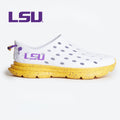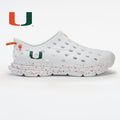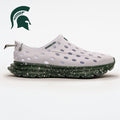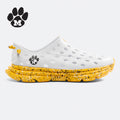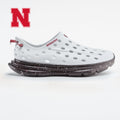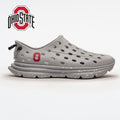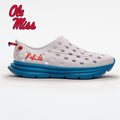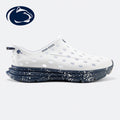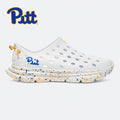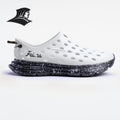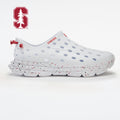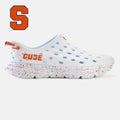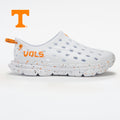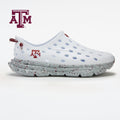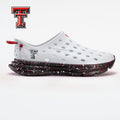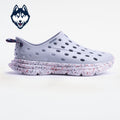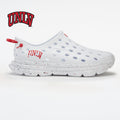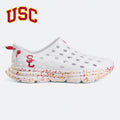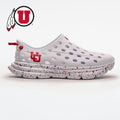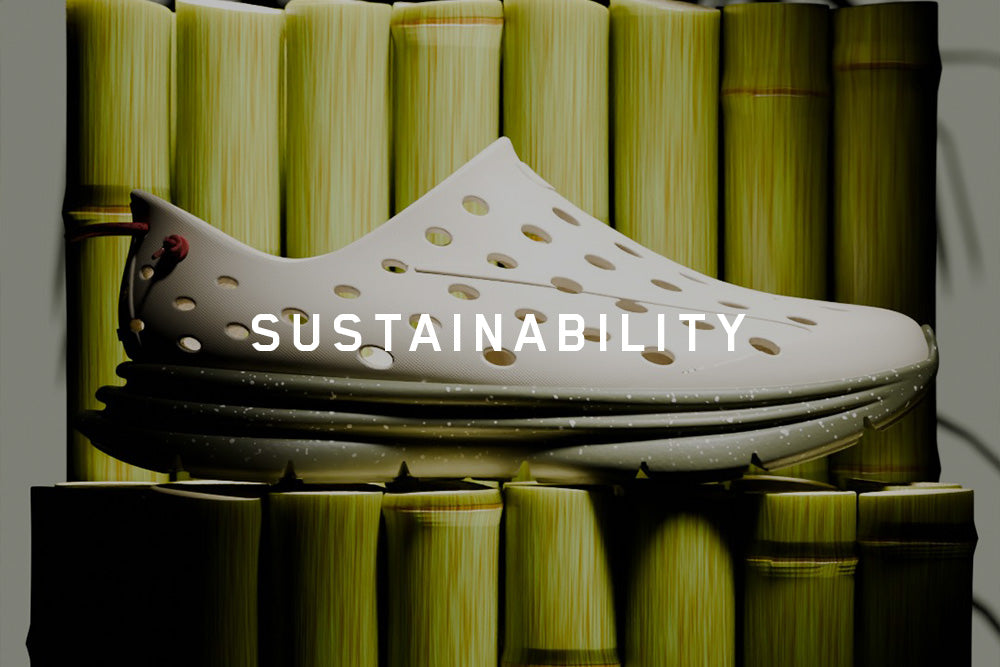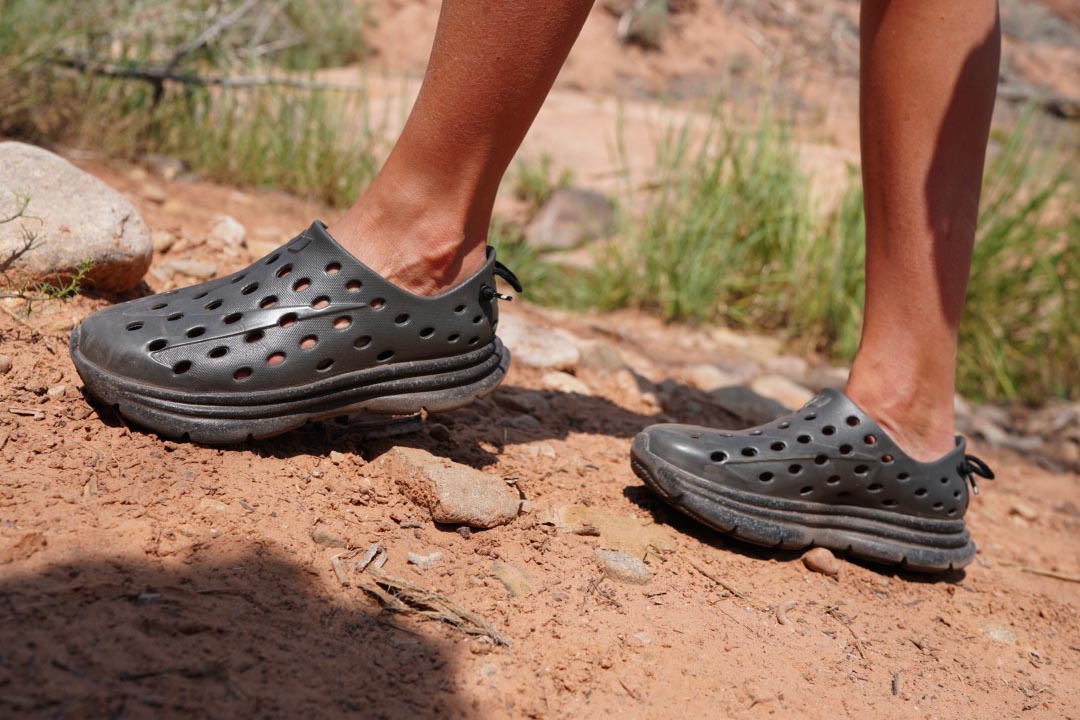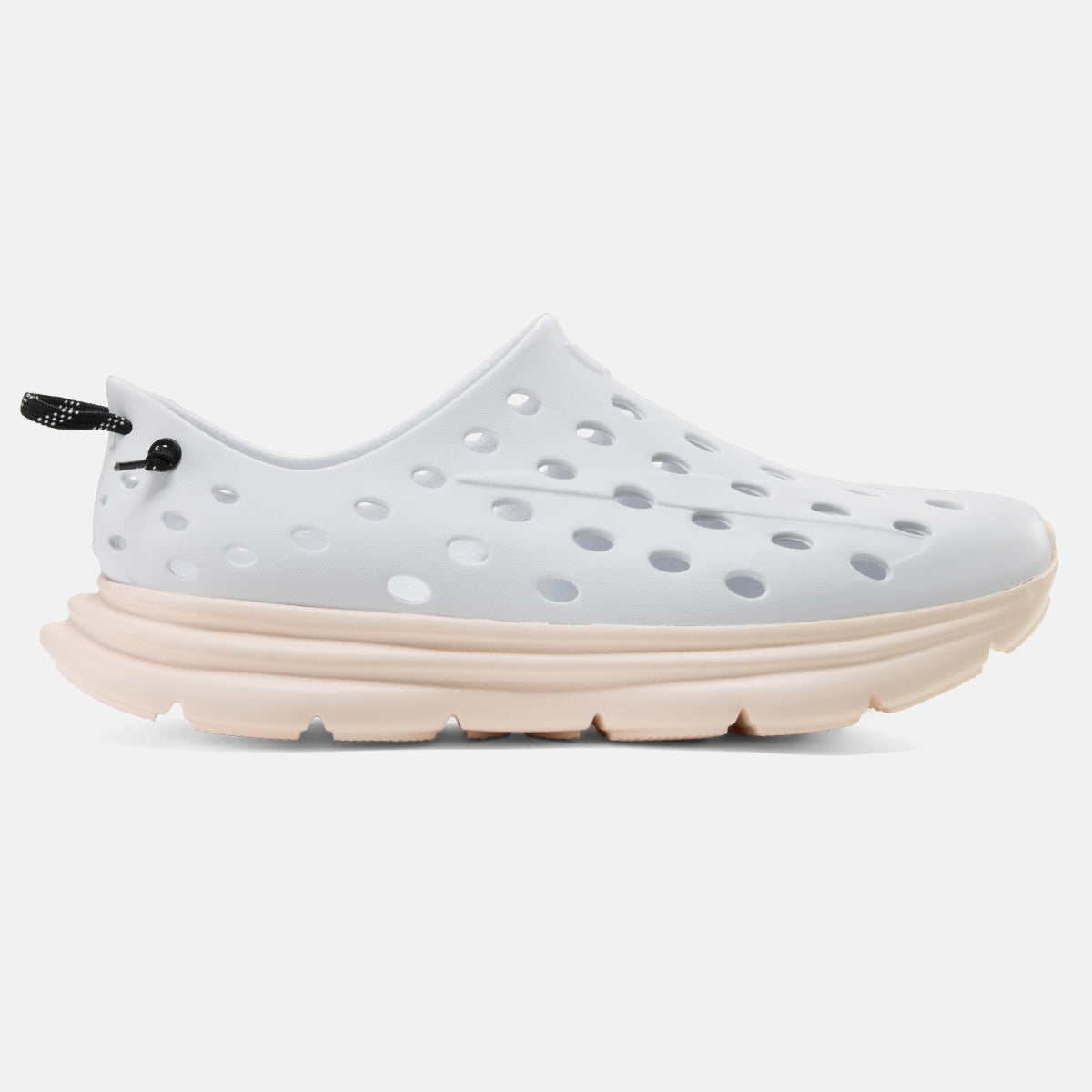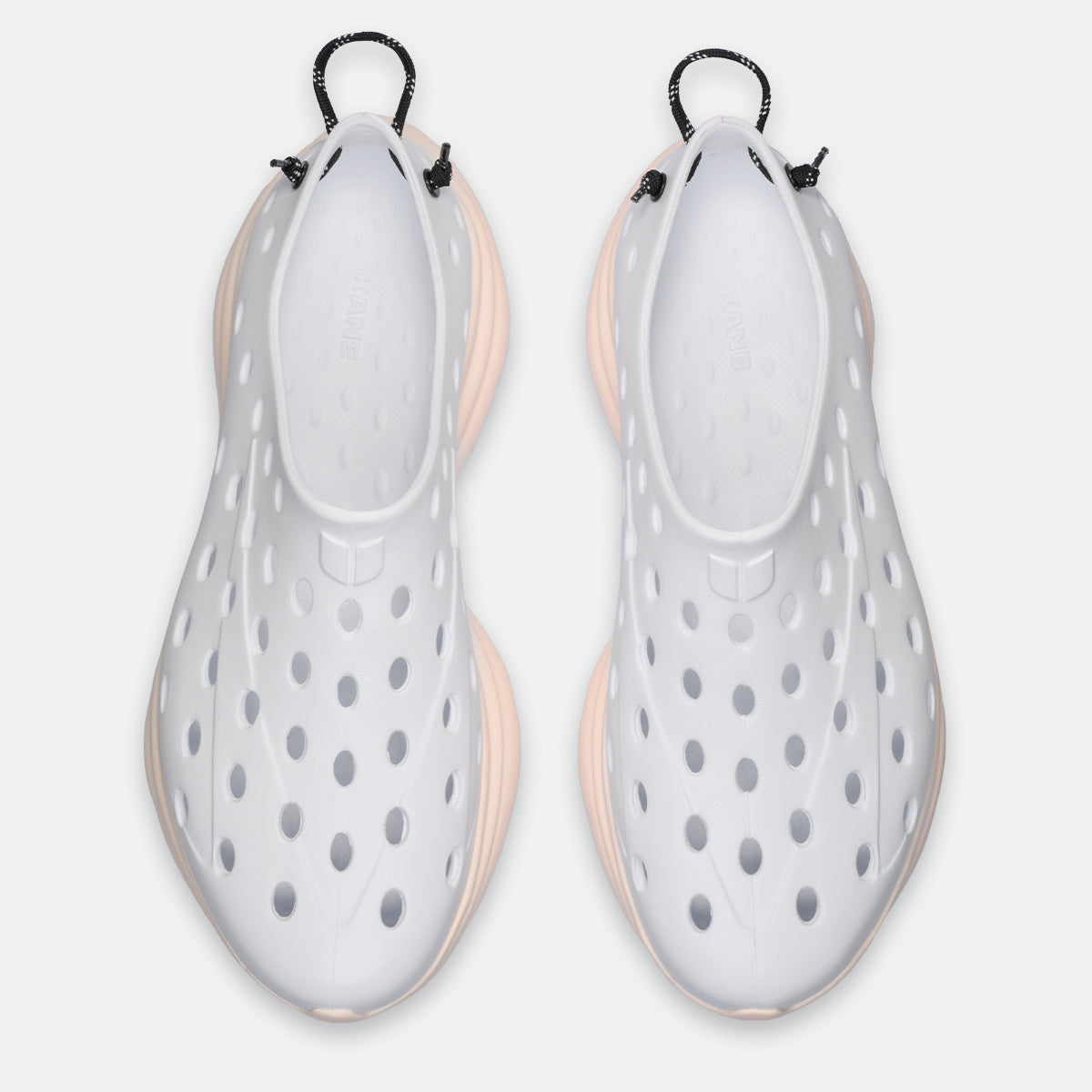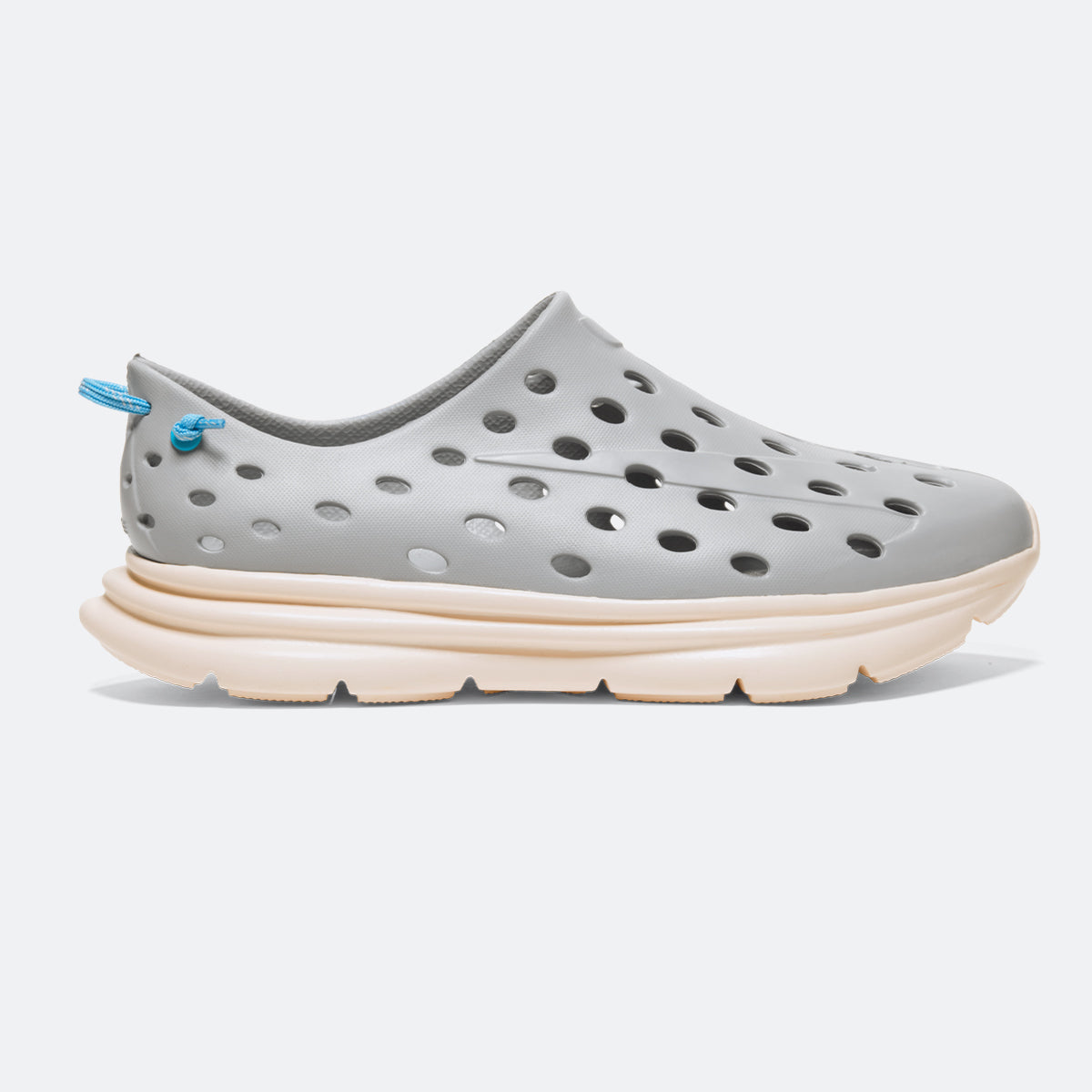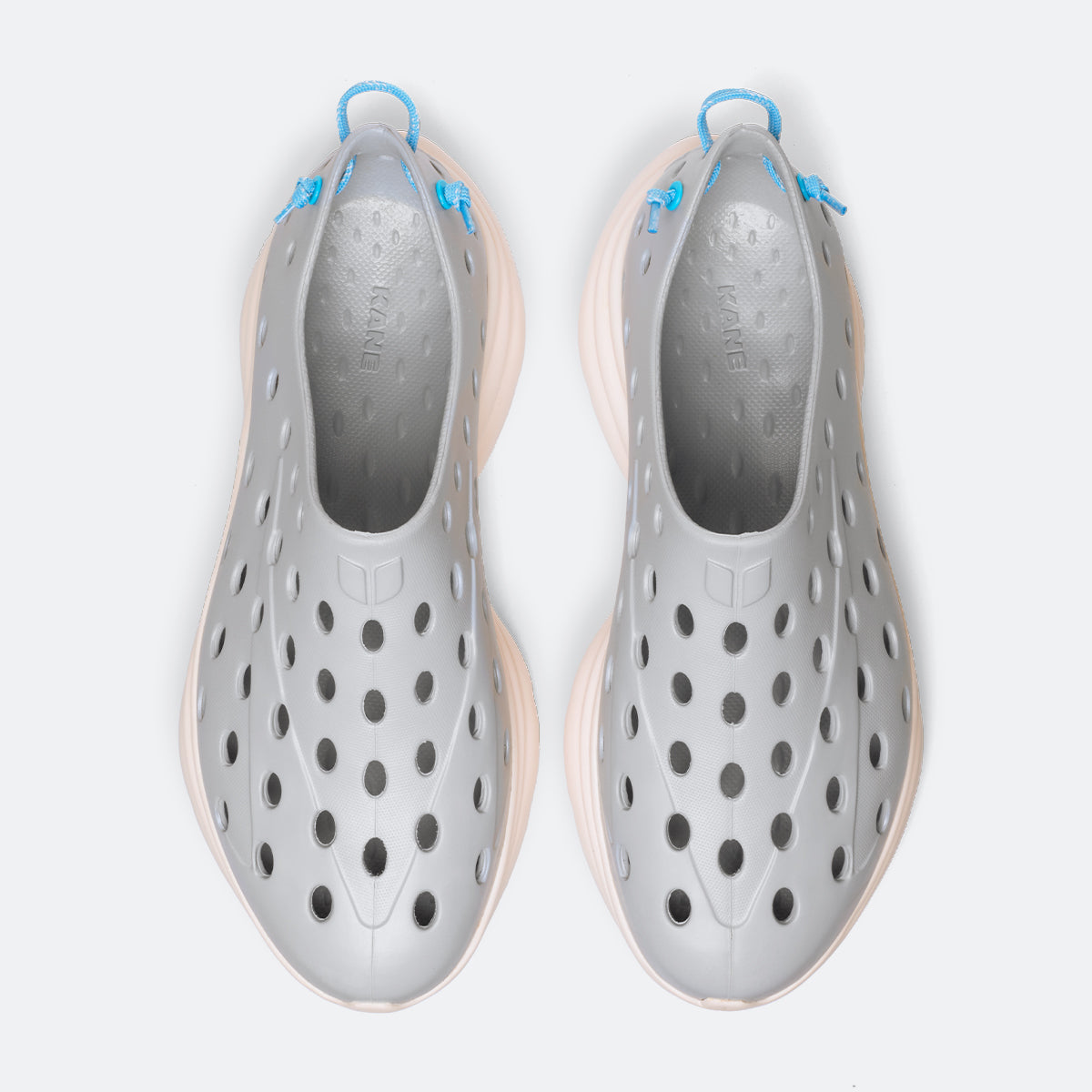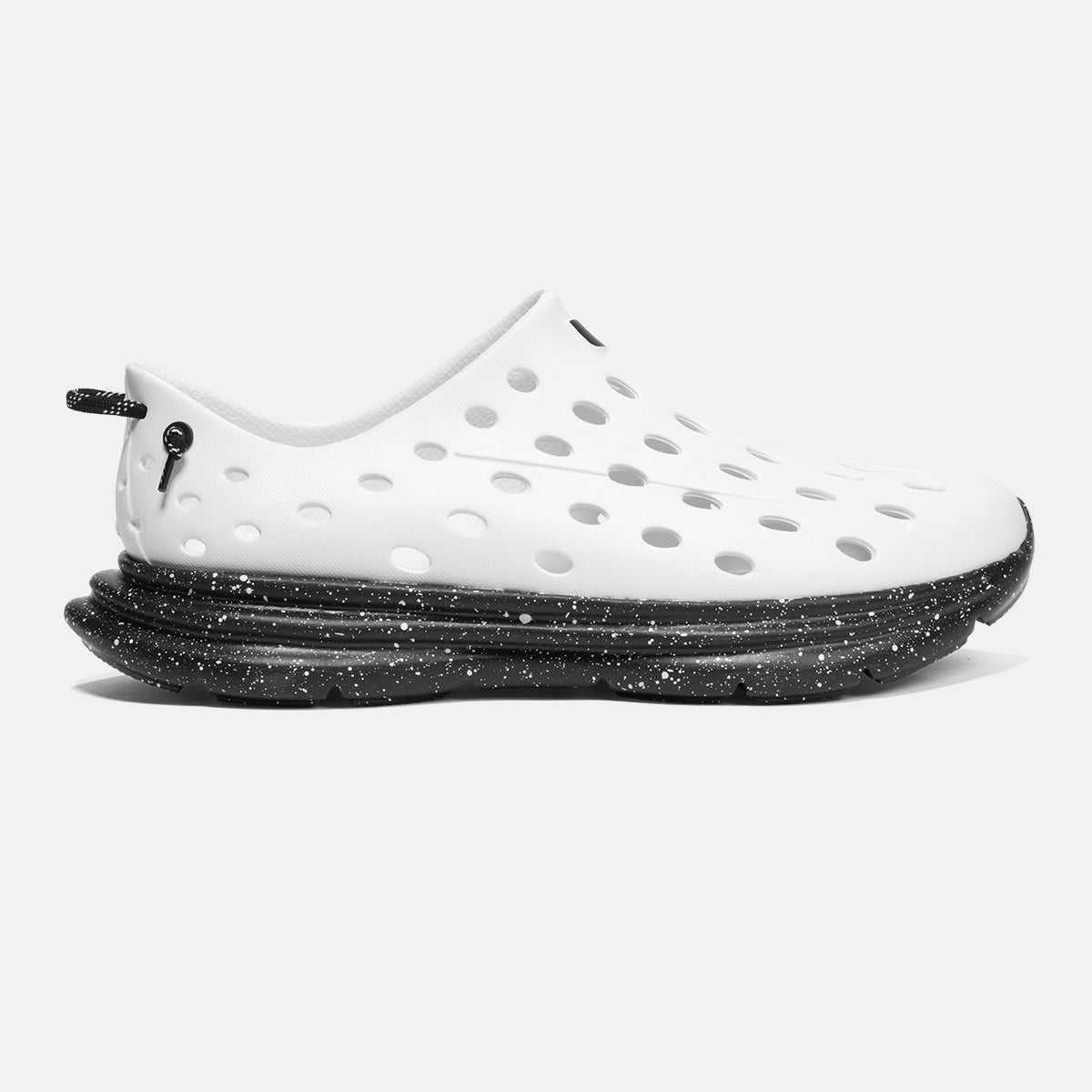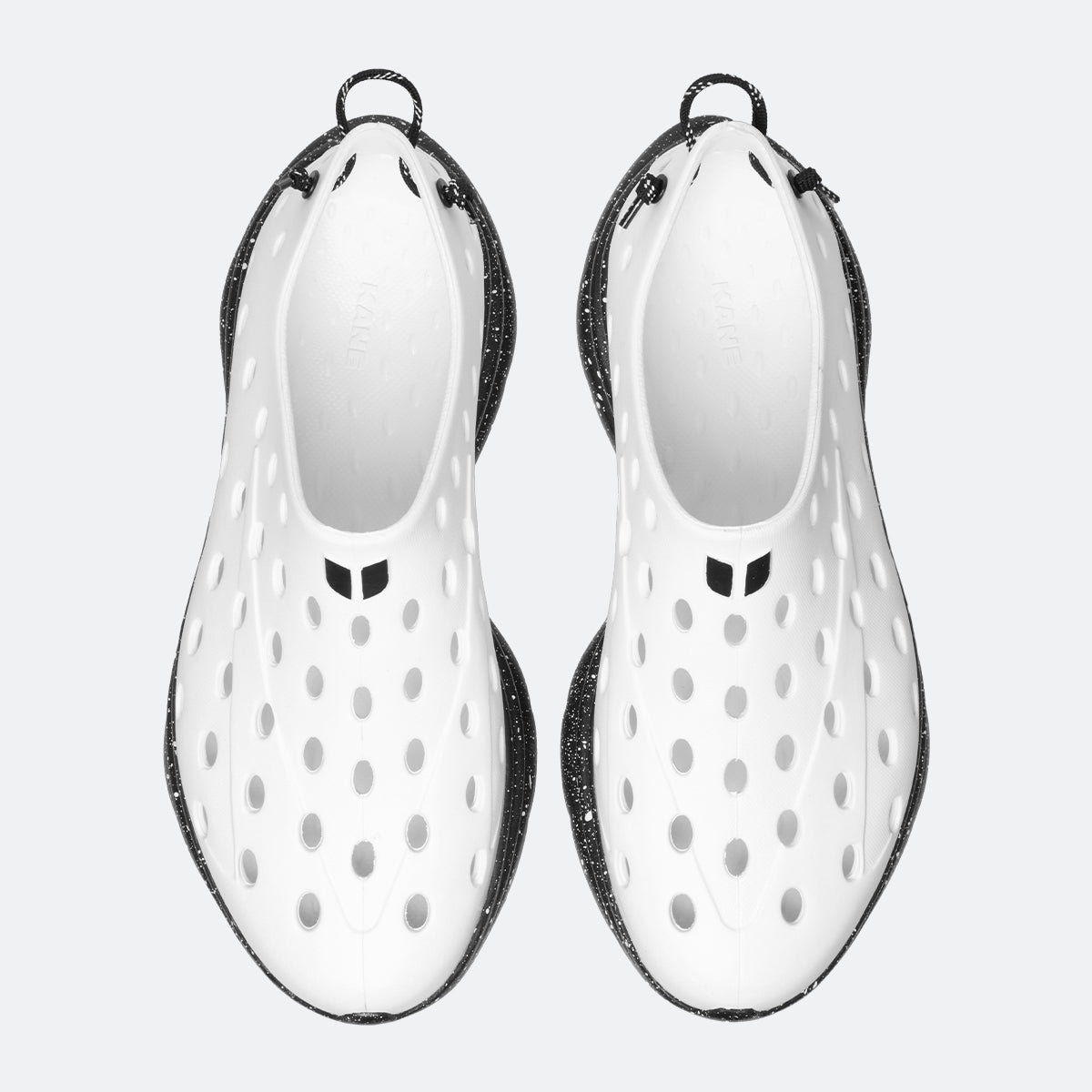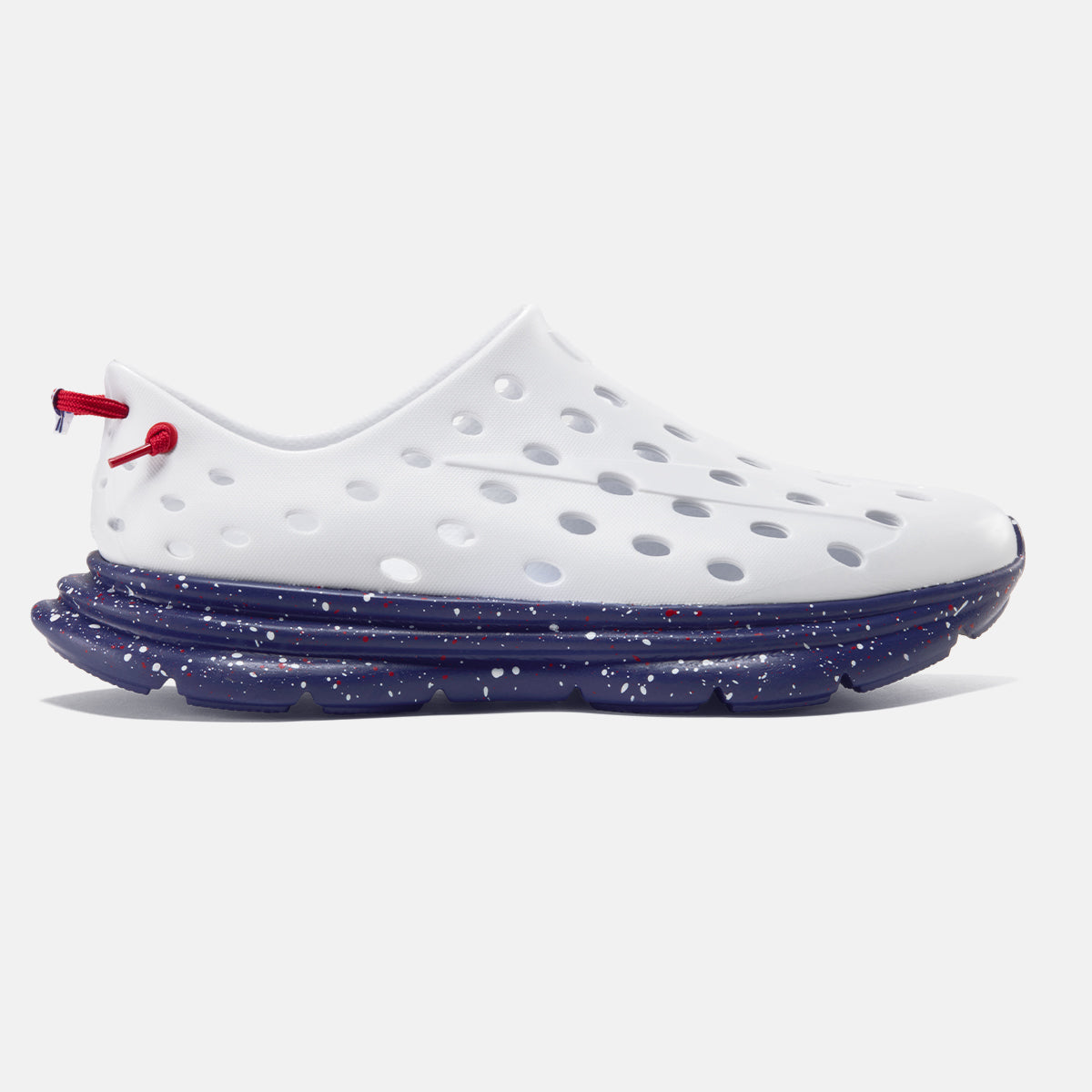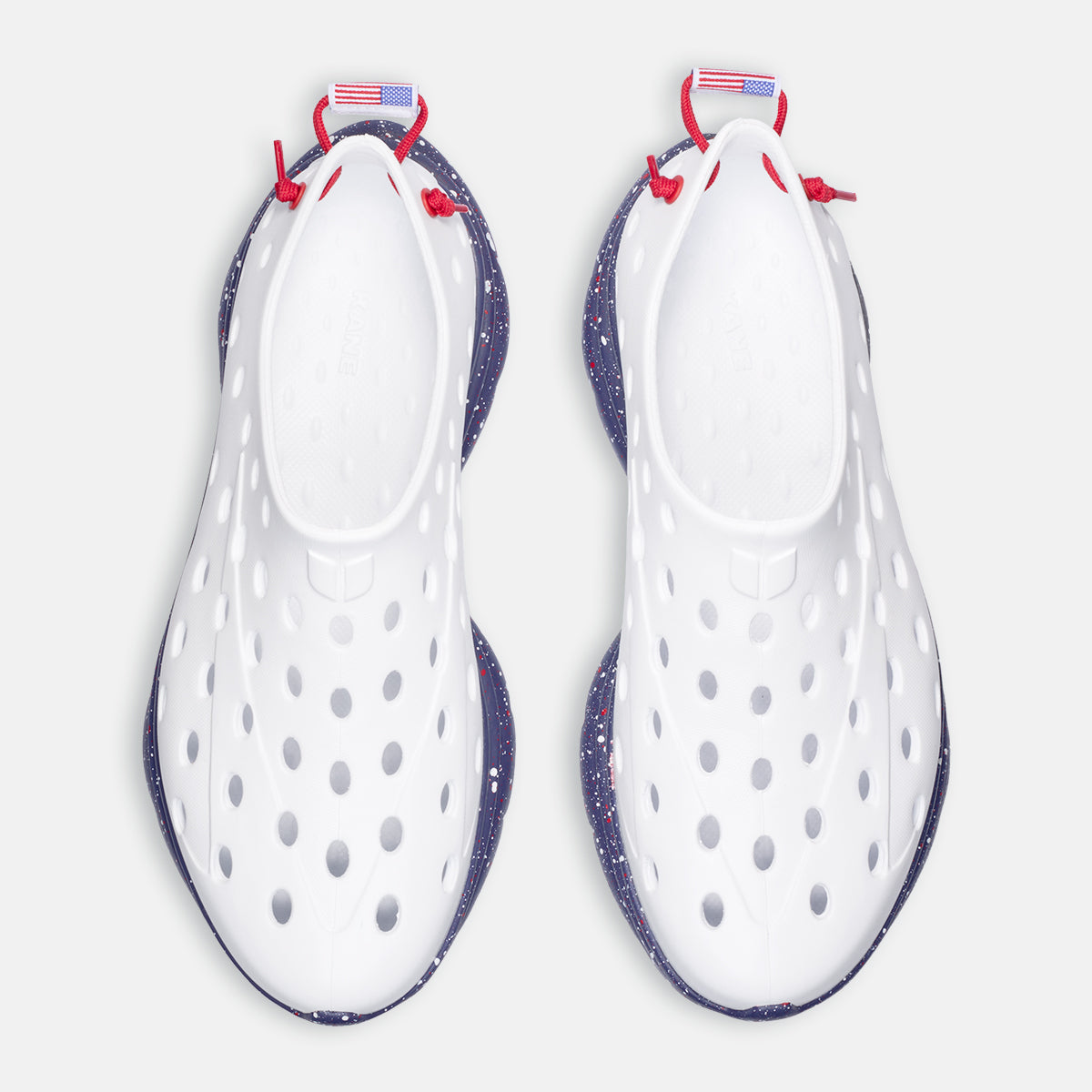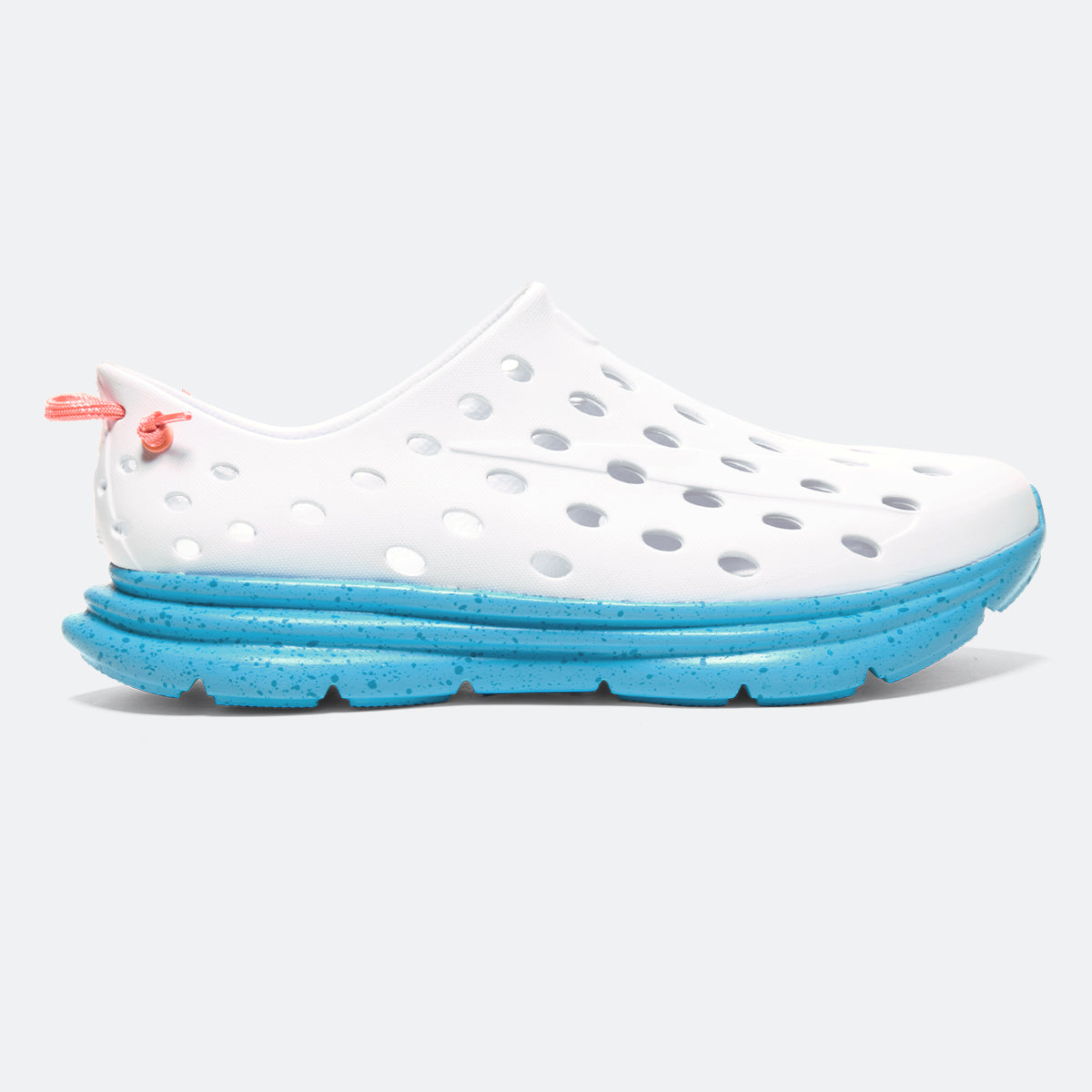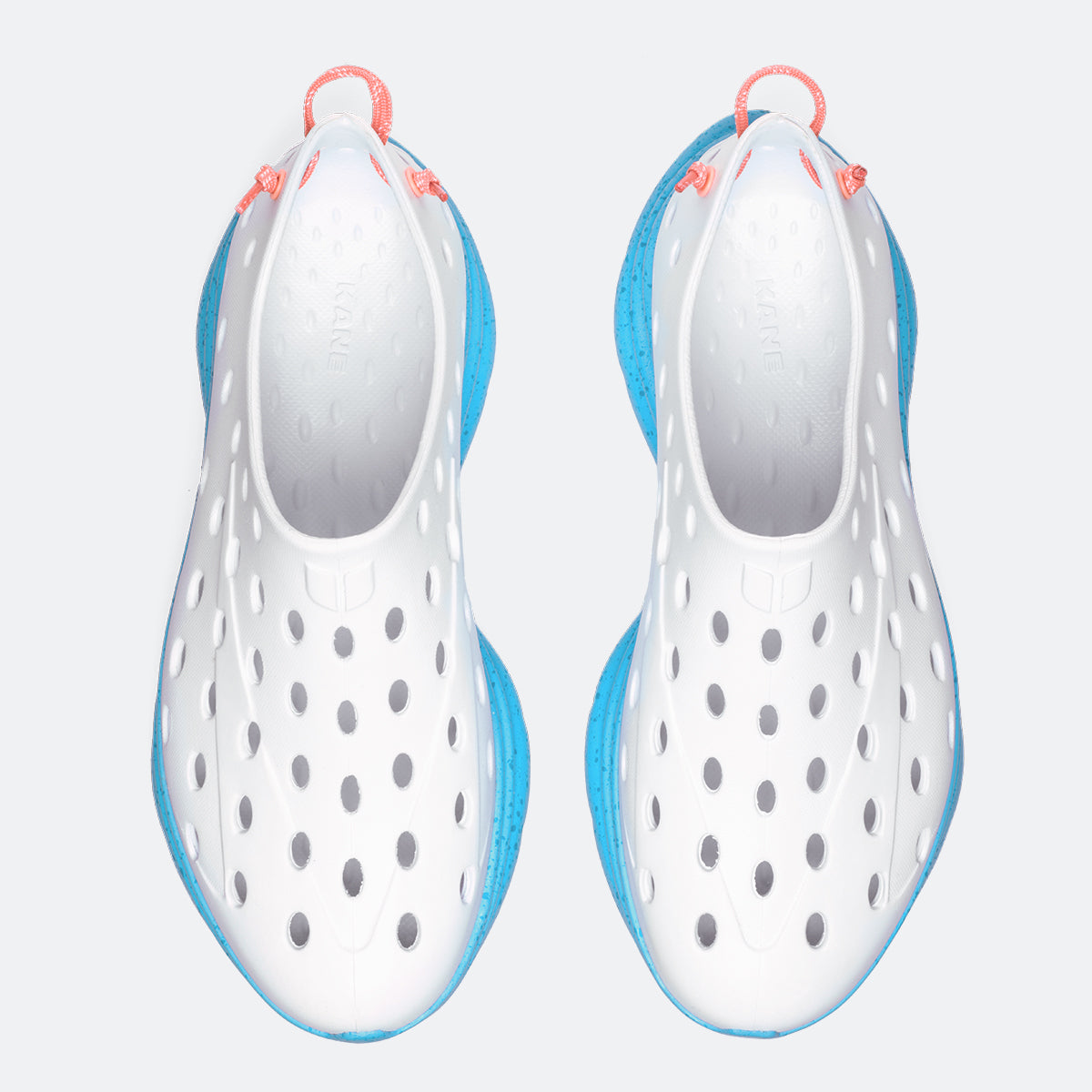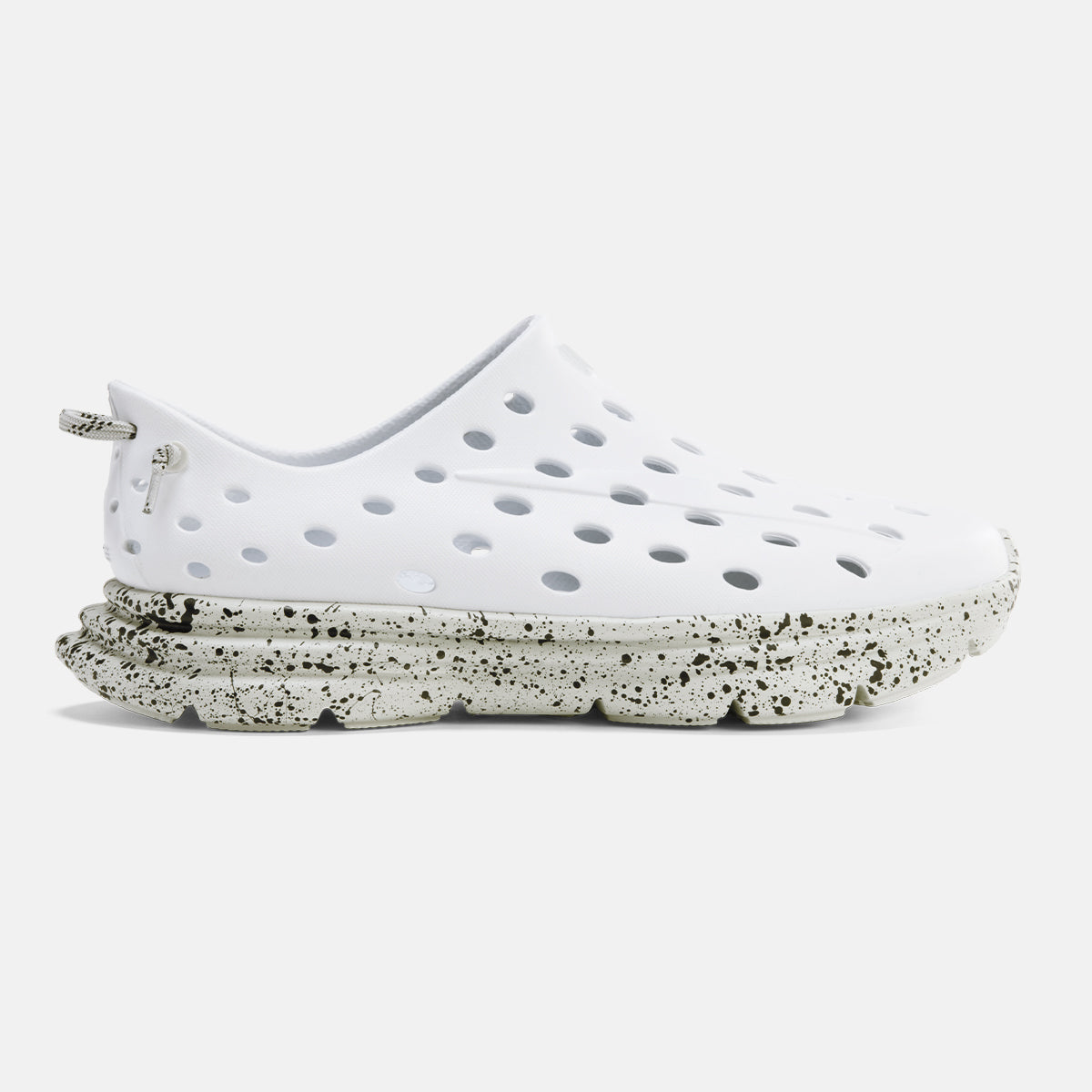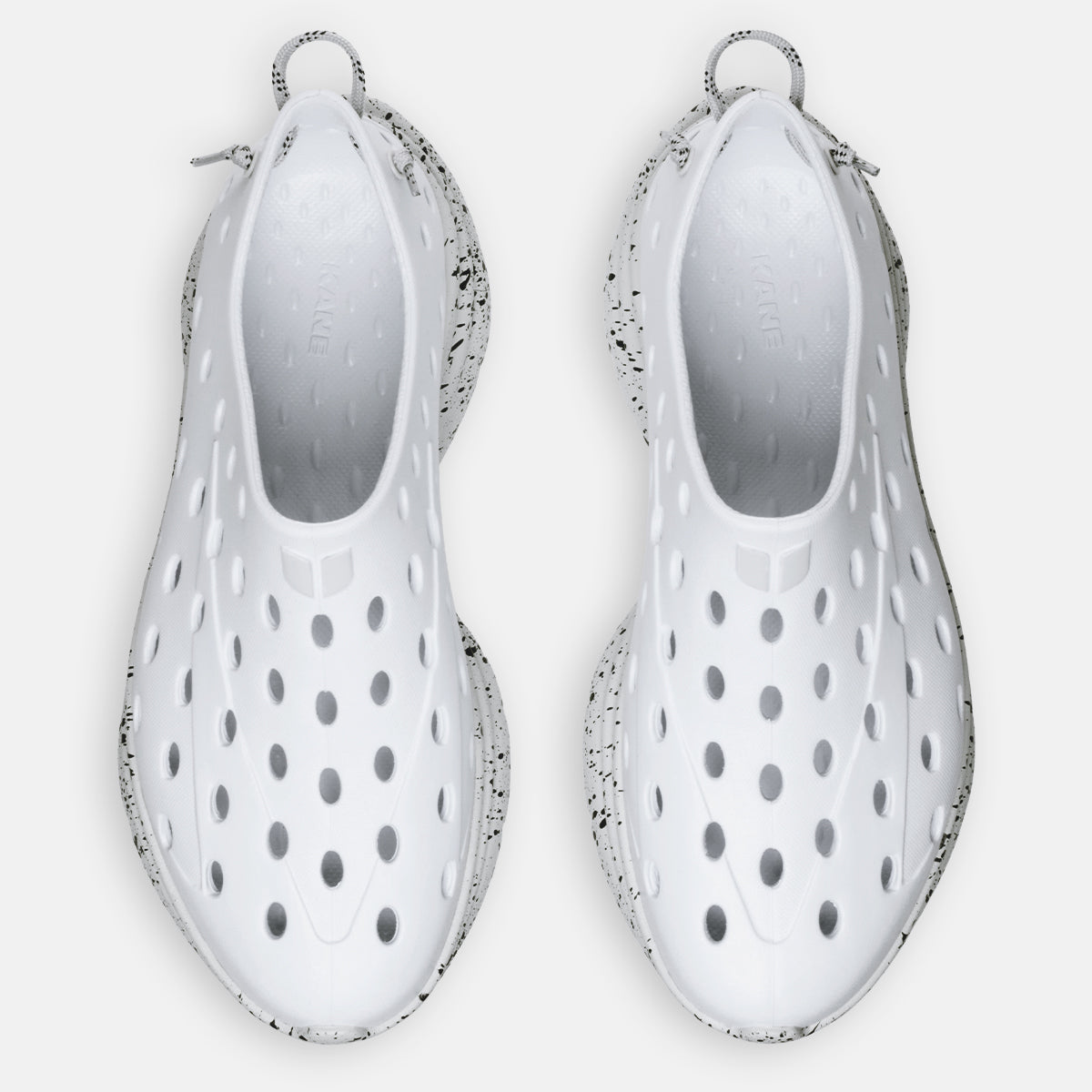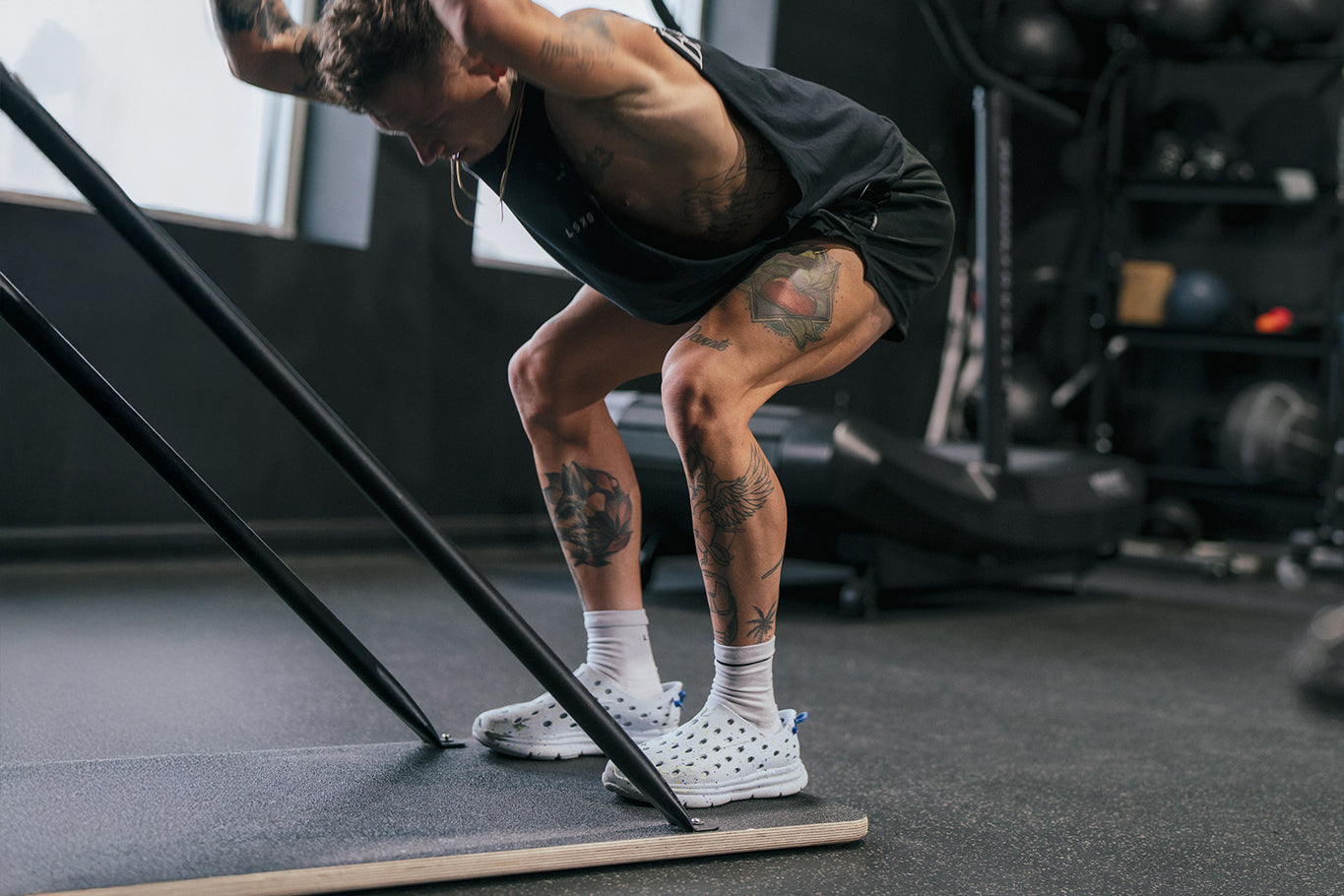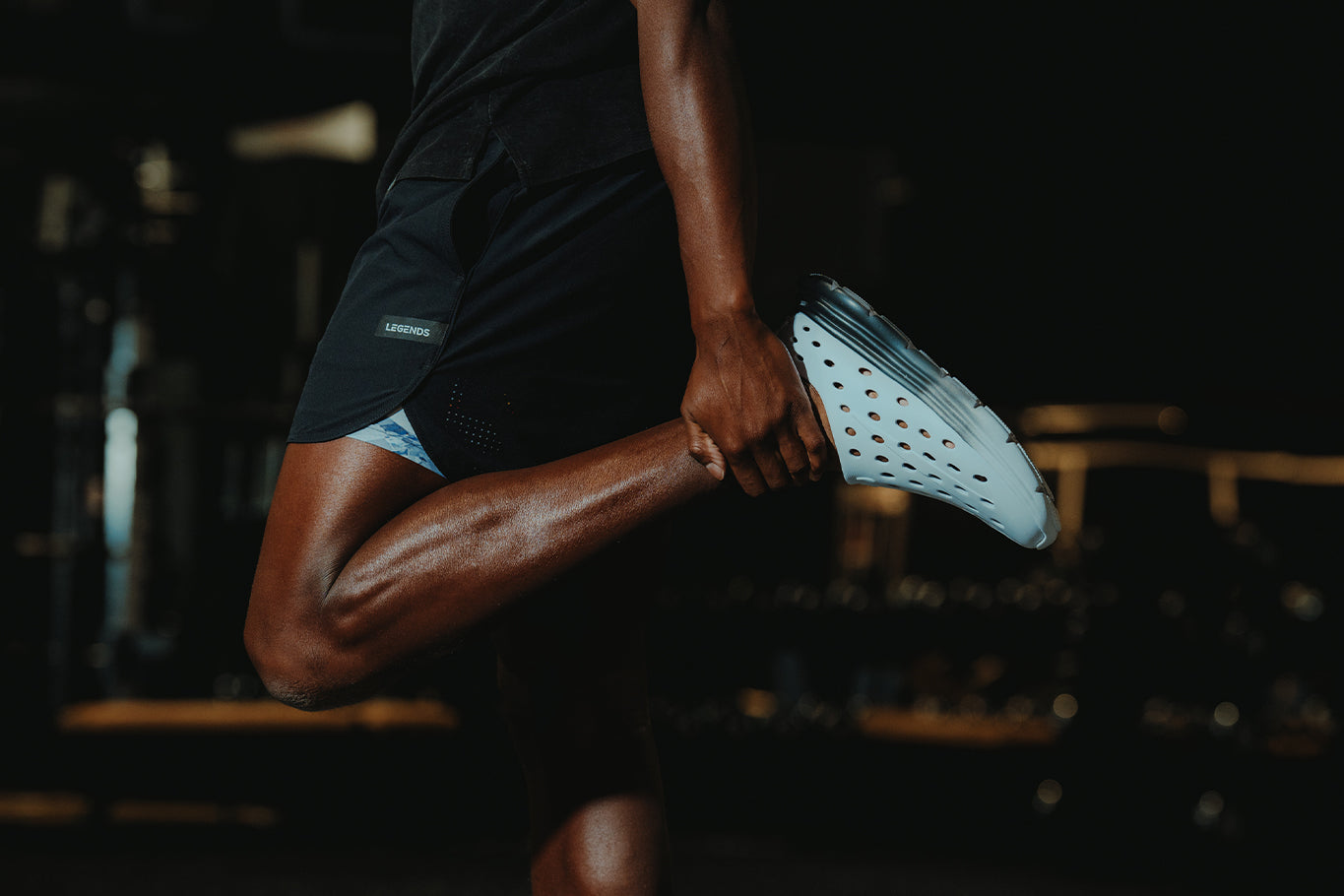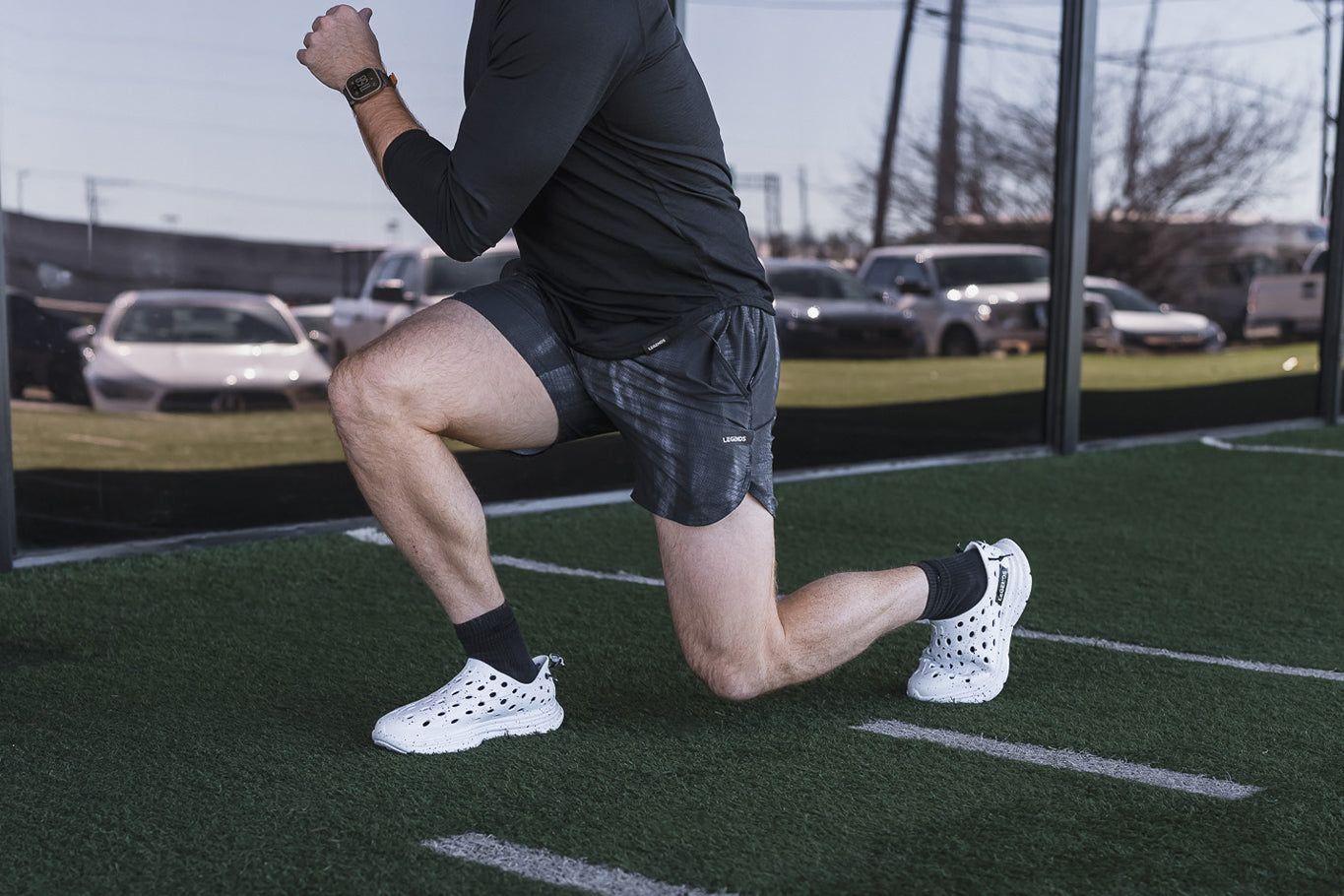What are non-slip shoes? Your essential guide to safety, comfort, and performance
Safety at every step matters in today's fast-paced world. Whether you're navigating a busy kitchen, recovering after an intense workout, or walking on wet pavement, the right footwear can make all the difference.
These specialized anti-slip shoes use advanced materials and designs to prevent slipping on challenging surfaces. From healthcare professionals working long shifts to athletes seeking recovery footwear, slip-resistant shoes serve diverse needs while keeping your feet safe and secure.
Understanding the answer to "What are non-slip shoes?" empowers you to make informed footwear decisions for safety, performance, and comfort.
Key takeaways
- Non-slip shoes feature specialized rubber outsoles with advanced tread patterns that prevent slips on wet surfaces, reducing injury risk by up to 67%.
- Post-exercise recovery presents unique slip hazards when muscle fatigue and reduced balance awareness make athletes vulnerable to falls that can sideline training for weeks.
- Modern slip-resistant footwear serves workplace safety and athletic recovery, combining advanced traction technology with comfort features for extended wear.

Understanding non-slip shoes: Definition and core purpose
Non-slip shoes are special footwear designed to prevent slips and falls on hazardous surfaces. Unlike regular shoes that prioritize style or basic comfort, these shoes put traction and stability first.
The key difference lies in their soles’ design and materials. While standard footwear might slide on wet surfaces or oily surfaces, slip-resistant footwear maintains grip through specialized construction. This makes them invaluable at work, during recovery after training, or in daily activities where stability matters.
Why slip-resistance matters during recovery
Recovery environments present unique slip hazards that can derail your healing process. A single slip injury can sideline training for weeks. When your muscles are fatigued, joints are stiff, or you're managing post-workout soreness, your balance and reaction time are naturally compromised. This is when slip-resistant footwear becomes critical for safe recovery.
The science behind non-slip technology
Non-slip shoes maximize contact between your foot and the ground, channeling liquids away to maintain balance on challenging terrain.
For active individuals and athletes, non-slip footwear serves an additional purpose: recovery support. After intense physical activity, your body needs stable, comfortable footwear that won't add stress to tired muscles and joints.
5 essential key features that define non-slip shoes
1. Advanced rubber and synthetic outsoles
The foundation of any slip-resistant shoe lies in its outsole material. Rubber outsoles provide natural grip, but modern non-slip shoes often use advanced compounds that outperform basic rubber. Ethylene vinyl acetate (EVA) and polyurethane create lightweight yet grippy soles that resist wear.
These materials maintain grip across temperature ranges. Unlike standard shoes, quality anti-slip shoes improve grip on wet surfaces through specific formulations.
2. Specialized tread patterns and groove design
Tread patterns separate good non-slip shoes from great ones. Hexagonal, circular, and multidirectional patterns create extra grip through geometric precision. Each groove serves a purpose in channeling liquids and increasing surface contact.
The depth and spacing of these grooves matter significantly. Deep grooves handle heavy liquid exposure, while tighter patterns work better on dry but smooth surfaces. The best slip-resistant shoes combine multiple pattern types across different areas of the sole.
3. Thick, supportive construction
Non-slip work shoes typically feature more durable materials and thicker soles than fashion footwear. This thickness serves multiple purposes. It houses the complex tread patterns, provides additional protection, and offers cushioning for long hours of standing or walking.
Quality shoes include reinforced high-stress areas, ensuring durability in demanding environments. This robust build makes them suitable for both professional use and recovery.
4. Water-resistant and breathable materials
Upper materials in slip-resistant footwear balance protection with comfort. Water-resistant materials keep feet dry in wet conditions, while breathable fabrics prevent overheating during extended wear. Many models feature reinforced toe caps for additional protection in industrial settings.
The combination of protection and breathability makes these shoes suitable for various applications, from kitchen work to post-workout recovery. Padded collars and cushioned insoles add comfort without sacrificing the protective elements.
5. Safety certifications and testing standards
Legitimate non-slip shoes carry certifications from recognized testing organizations. These certifications validate that the shoes have been tested on various surfaces and meet specific slip-resistance standards. Look for ASTM, SATRA, or similar certifications when shopping.
These certifications aren't just marketing tools. They represent rigorous testing on wet and greasy surfaces and other challenging conditions. Shoes that pass these tests provide reliable performance when you need it most.
Types of non-slip shoes for every need
Professional work shoes
Non-slip work shoes serve tradespeople, healthcare professionals, and restaurant workers facing slick floors and potential fall accidents daily. Professional models often feature reinforced toe caps for impact protection and padded collars for comfort during long shifts. They handle wet or oily surfaces while providing additional foot protection through puncture-resistant insoles.
Athletic and recovery footwear
Recovery-focused slip-resistant shoes like the Kane Revive serve the 30–60 minute post-exercise window when athletes are most vulnerable to slips. During this period, muscle fatigue, reduced balance awareness, and the need to transition between various recovery environments (dry sauna to wet shower, or gym floor to rain-soaked parking lot) create multiple slip opportunities that standard athletic shoes can't address.
Casual and lifestyle options
Modern non-slip footwear includes stylish options for everyday wear, bringing safety technology to casual settings. Casual slip-resistant shoes work well for anyone valuing stability in daily activities, particularly in environments with variable surface conditions that most shoes weren't designed to handle.
Specialized applications
Specialized non-slip shoes serve specific needs beyond general work and casual wear. Outdoor models combine hiking features with enhanced slip resistance for uneven surfaces. Senior-friendly options focus on stability with wider openings and adjustable closures. Marine shoes excel on boat decks and in consistently wet environments.
Who should wear non-slip shoes?
Slip-resistant footwear serves diverse groups, each with specific safety and performance needs.
According to the Centers for Disease Control and Prevention, "Slips, trips, and falls are the second most common type of fatal work-related injuries and the third most common type of non-fatal work-related injuries in the United States."
Healthcare professionals navigate hospital corridors and patient care areas where slippery floors from cleaning solutions create constant hazards. Non-slip shoes provide the stability needed to focus on patient care.
Restaurant workers face challenging kitchen environments with wet and greasy surfaces and fast-paced movement.
Construction workers and industrial employees work in areas where accidents from slips can have serious consequences. Safety footwear is required equipment that can prevent slips and save lives.
Athletes and fitness enthusiasts need stable footwear for recovery and navigating post-workout environments. After training, muscle fatigue reduces your balance awareness, making wet locker room floors potentially dangerous. Certified slip-resistant recovery shoes, such as the Kane Revive, provide the stability needed when changing clothes, showering, or moving through steam rooms where traditional athletic shoes would be impractical.
Recovery doesn't stop at the gym. At home, post-workout routines often involve ice baths, meal preparation, or gentle movement. Wet bathroom floors, spilled protein shakes, or morning dew on patios create slip hazards when muscles are tight and coordination is impaired.
How to choose the right non-slip shoes
Selecting the perfect pair requires considering your needs beyond basic safety features. The right non-slip shoes depend on your activities, work environment, and preferences.
Consider the following factors:
- Surface conditions: Wet or oily surfaces need different tread patterns than dry floors, and oily surfaces demand specific rubber compounds that maintain grip.
- Duration and intensity: For prolonged wear, prioritize cushioned insoles, arch support, and breathable materials.
- Proper fit: Non-slip shoes that don't fit properly can cause ankle sprains. Ensure adequate toe room with a secure heel fit.
- Tread pattern: Deep grooves handle heavy liquid exposure while smaller patterns provide better grip on moderately slippery surfaces.
- Safety certifications: Look for ASTM or similar testing certifications that validate slip-resistance claims.
Kane recovery shoes: Engineered for post-exercise safety
Kane's recovery shoes address the specific slip risks athletes face during their most vulnerable recovery moments. Unlike traditional non-slip work shoes designed for industrial environments, Kane's approach recognizes that recovery happens in diverse settings requiring safety and comfort.
Locker room confidence
The water-resistant upper and drainage-optimized tread patterns handle wet locker room conditions while the easy-on design accommodates post-workout stiffness and swelling.
PT-ready design
The adjustable strap system works with compression socks or swollen feet, common during physical therapy sessions, while the slip-resistant sole provides stability on clinical floors.
Home recovery support
Whether walking to the kitchen for a post-workout snack or stepping onto a wet patio for cool-down stretches, Kane's grip technology ensures safety during those first 30 minutes when balance awareness is compromised.
When and how to wear Kane Revive
The best time to wear most recovery shoes is directly after a strenuous activity, such as running or exercising. To guarantee maximum comfort and effective recuperation, make sure that you're wearing your footwear correctly by securing the adjustable strap for a snug fit around your feet.
"The Kane Revive has a proprietary blend of EVA known as RestoreFoam. It's a dual-density, which means it's got cushioning and it's got support. It's going to stabilize your foot. It's going to create amazing foot capture with every step you take." — Dr. Daniel Geller, podiatrist and foot and ankle surgeon.
Making the right choice for safety and performance
Slip-resistant footwear has evolved far beyond basic safety footwear. Today's non-slip shoes combine advanced materials, innovative tread patterns, and comfort technologies that serve everyone from healthcare professionals to recovering athletes.
A study published in the Scandinavian Journal of Work, Environment, and Health found that slip-resistant footwear effectively reduces slipping-related injuries in food service workers. Workers who were provided with highly rated, slip-resistant shoes experienced a 67% reduction in slip injury claims.
Investing in quality non-slip footwear means confidence and comfort. Whether navigating slippery floors at work or seeking supportive recovery footwear after an intense workout, the right slip-resistant shoes can make all the difference.
Frequently asked questions
What qualifies as a non-slip work shoe?
A non-slip pair of work shoes must meet ASTM certifications for slip resistance on greasy and slick surfaces. They feature high-grade rubber soles and tread grooves that enhance grip, and many feature reinforced toe caps for workplace safety. The shoes must demonstrate measurable slip resistance through standardized testing.
How do you know if a shoe is non-slip?
Look for explicit "non-slip," "slip-resistant," or "anti-slip" labeling with safety certifications like ASTM or SATRA. Check for deep grooves and multidirectional tread patterns designed to channel liquids. Rubber outsoles or specialized synthetic materials provide better grip than standard materials. Rather than risky home testing, rely on certified slip-resistance ratings and professional reviews from verified purchasers who've used the shoes in real wet conditions.
Can I wear sneakers as non-slip shoes?
Regular sneakers don't provide adequate slip resistance for hazardous conditions. Slip-resistant sneakers combine comfort with specialized tread patterns and rubber outsoles for better traction. They work for gym and casual settings but won't meet professional safety footwear requirements. Look for sneakers specifically labeled slip-resistant.
Why do I need slip-resistant shoes for recovery?
Post-exercise recovery presents unique slip risks that many athletes overlook. Your balance awareness is reduced for 30-plus minutes after intense exercise, while muscle fatigue impairs your ability to correct missteps quickly. Recovery activities, such as ice baths, locker room showers, and kitchen prep for recovery nutrition, often occur on wet surfaces precisely when your natural stability is compromised. Recovery shoes provide external stability when your internal systems are temporarily impaired.
No content on this site should ever be used as a substitute for direct medical advice from your doctor or other qualified clinicians.


